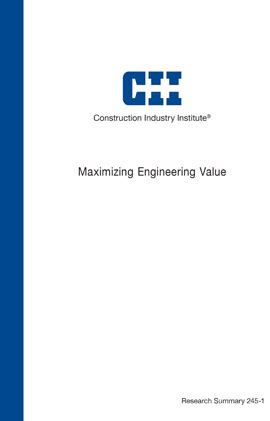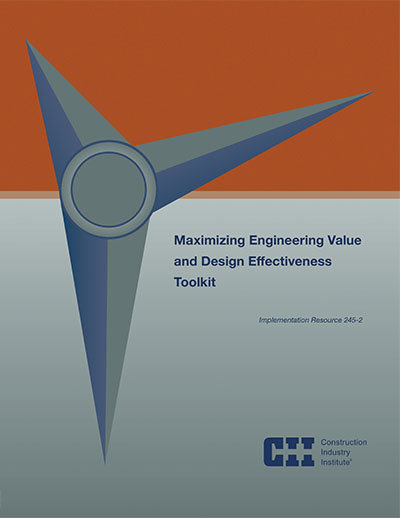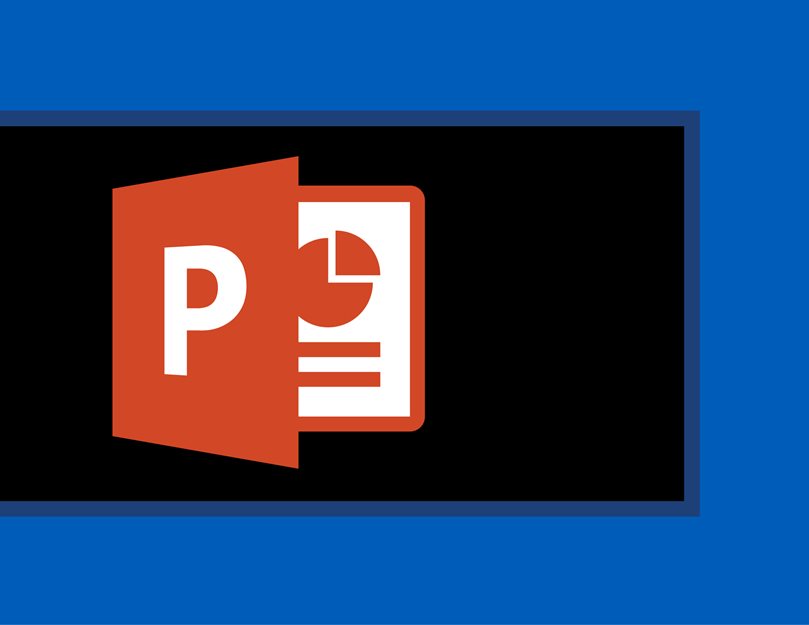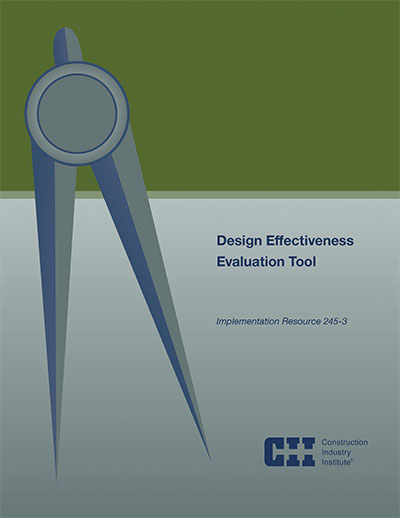
Maximizing Engineering Value
The value that engineering contributes to capital projects is rarely maximized for a wide variety of reasons. The engineering phase can be rushed; the design team can be under-resourced; owner’s requirements can be unclear; technology can change rapidly; organizational structures can be constraining; or project objective priorities can be unclear, to name a few. In today’s project environment, maximizing engineering value requires that many different issues, opportunities, and challenges be identified and confronted early in the project planning process.
Responding to these opportunities and challenges, CII established the Maximizing Engineering Value Research Team to examine various strategies through which project value from engineering can be maximized. Applying rigorous search, analysis, and evaluation processes, the research team ultimately identified 64 engineering strategies for maximizing value to capital projects.
To better understand each of the 64 strategies, the research team further examined each strategy from many perspectives:
- Purpose and objective
- Motive for implementation
- Impact on 11 common project value objectives, including tradeoffs
- Influence of timing on the effectiveness of implementation
- Project characteristics and circumstances for which impact is leveraged
- Frequency of implementation
- Ease of implementation
- Fundamental or mandatory vs. optional implementation
- Linkage with other project phases
- Role in overcoming common barriers to maximizing engineering value
- References for further information.
Much of this information has been organized into one of the research team’s publications, Engineering Strategy Catalog (IR245-2, Tool 2), yet additional questions remain. For example, from such a large listing, how can a project team select those strategies most beneficial to a project? Also, how can such strategies be effectively implemented within a project context – and integrated with design effectiveness efforts? Answers to these questions may be found in the Maximizing Engineering Value & Design Effectiveness Toolkit (CII Implementation Resource IR245-2).
When well planned and executed, engineering value can be significantly enhanced on capital projects. The Toolkit is intended to be a comprehensive and easy-to-use resource that project teams can use to maximize engineering value. This publication summarizes the process applied by the research team, highlights key findings from the research, and introduces and reviews elements of the Toolkit.
Implementation for the 64 strategies will range from easy to difficult, depending on the resources and skills available as well as implementation history or experience. For example, Risk-Based Design, IT Integration with Key Vendors, and Building Information Modeling (BMI) are among the more difficult strategies to implement, requiring specialists. (RS245-1, p. 13)
Many of the engineering strategies create value by having an influence on phases prior to or subsequent to engineering, as depicted in the figure below. In all, 50 of the 64 strategies essentially represent linkages to other phases. This underscores the breadth of influence that engineering can have on the different project phases, along with the importance of the engineering manager’s role in understanding and promoting a broader view of engineering’s full potential. A complete tabular presentation showing the phase/phases supported by each strategy is presented in Appendix H of Research Report 245-11.
Common Barriers to Engineering Value – the research included an industry survey to better understand the frequency and severity of barriers to engineering value. The 10 most severe and frequent barriers to engineering value are listed below. Strategies to prevent overcome these barriers are outlined on the research summary.
- Inaccurate understanding of owner project priorities and objective preferences
- Suboptimal allocation of contract risks to contracting parties
- Lack of detailed definition of project work scope
- Lack of timely input to design process from all key stakeholders
- Lack of knowledge of critical owner-fabricator-contractor driven design package completion need dates
- Lack of knowledge of owner’s planned shutdown dates or of operations requirements near phased construction work
- Insufficiently detailed Project Execution Plan that is not understood or committed to by design team
- Insufficient resources that are not provided in a way to enable efficient deployment
- Lack of awareness of or misapplication of relevant Lessons Learned from previous projects
- Ineffective design QA/QC



